For all the talk about horsepower, turbochargers, and lap times, few things stir the soul of an automotive enthusiast more than the feel of a great manual gearbox.
In an increasingly digital, automatic world, the manual transmission remains one of the last truly analog links between driver and machine. It’s tactile. It’s mechanical. It demands presence and precision. But like any crucial tool, a manual gearbox can either elevate a car to greatness or drag it into frustrating mediocrity.
The act of shifting gears manually is one of the most personal and engaging aspects of driving. Unlike automatic or dual-clutch transmissions, which make decisions on the driver’s behalf, a manual requires deliberate thought, coordination, and muscle memory.
Every shift becomes a part of the driving rhythm, an opportunity to sync your mind and body with the machine’s intentions. And in this union, the feel of the gearbox—the weight of the shift, the precision of the gates, the feedback through the lever—matters immensely.
Yet not all manual gearboxes are created equal. Some provide silky-smooth engagement with short, crisp throws that feel like second nature. Others feel like you’re grinding metal, lost in a rubbery mess of vague gates and reluctant synchros.
Some cars have clutch pedals that offer perfect resistance and predictability, while others leave you second-guessing the bite point every time you roll off the line. A manual transmission, for all its charm, can also be its own worst enemy when not executed well.
In this article, we dive into both extremes: the five cars with the smoothest-shifting manual gearboxes, and the five cars with the most notchy or less satisfying ones. These aren’t simply lists of fast or iconic cars; they’re case studies in tactile engineering.
We look beyond performance numbers and spec sheets to examine the feel, the feedback, the soul of the shifter. Because in a manual, how it shifts can often matter more than how fast it goes.
We start with the triumphs—cars like the Honda S2000, whose gearboxes have become legends in their own right, revered for their rifle-bolt precision and seamless engagement.
We explore what makes these transmissions so satisfying: the materials, the design philosophy, the placement, and the clutch integration. These are cars where every gear change feels like part of a dance, where the driver is rewarded for their precision and timing.
Then we explore the other side of the spectrum—the missed opportunities and outright disappointments. Some of these cars, like the Subaru WRX or the early Nissan 350Z, are otherwise excellent vehicles held back by lackluster gearbox execution.
Others, like the fifth-gen Camaro SS, prioritize brute strength over refinement, leaving drivers with a heavy, reluctant shift that detracts from the driving experience. And in some cases, even premium brands like BMW and Toyota have delivered gearboxes that feel more like compromises than accomplishments.
It’s worth noting that notchy or clunky gearboxes aren’t always deal-breakers—sometimes they suit the personality of the car, or can be improved with aftermarket upgrades. But in a manual transmission car, the gearbox isn’t just a component—it’s a core part of the driving narrative.
Whether you’re canyon carving, autocrossing, or just enjoying a Sunday drive, a great gearbox becomes a trusted companion. A bad one becomes a constant reminder of what could have been. So buckle up as we go deep into the nuanced world of manual gearboxes.
Whether you’re a purist with oil under your fingernails or a curious observer trying to understand what all the fuss is about, this guide will help you appreciate why the feel of a shifter—its smoothness, precision, or lack thereof—can make or break an entire car. Because when it comes to the manual transmission, feel isn’t just a preference. It’s everything.
ALSO READ: 5 Used Cars That Feel Like Bargains and 5 That Are Hidden Traps
Five Cars with the Smoothest-Shifting Manual Gearboxes
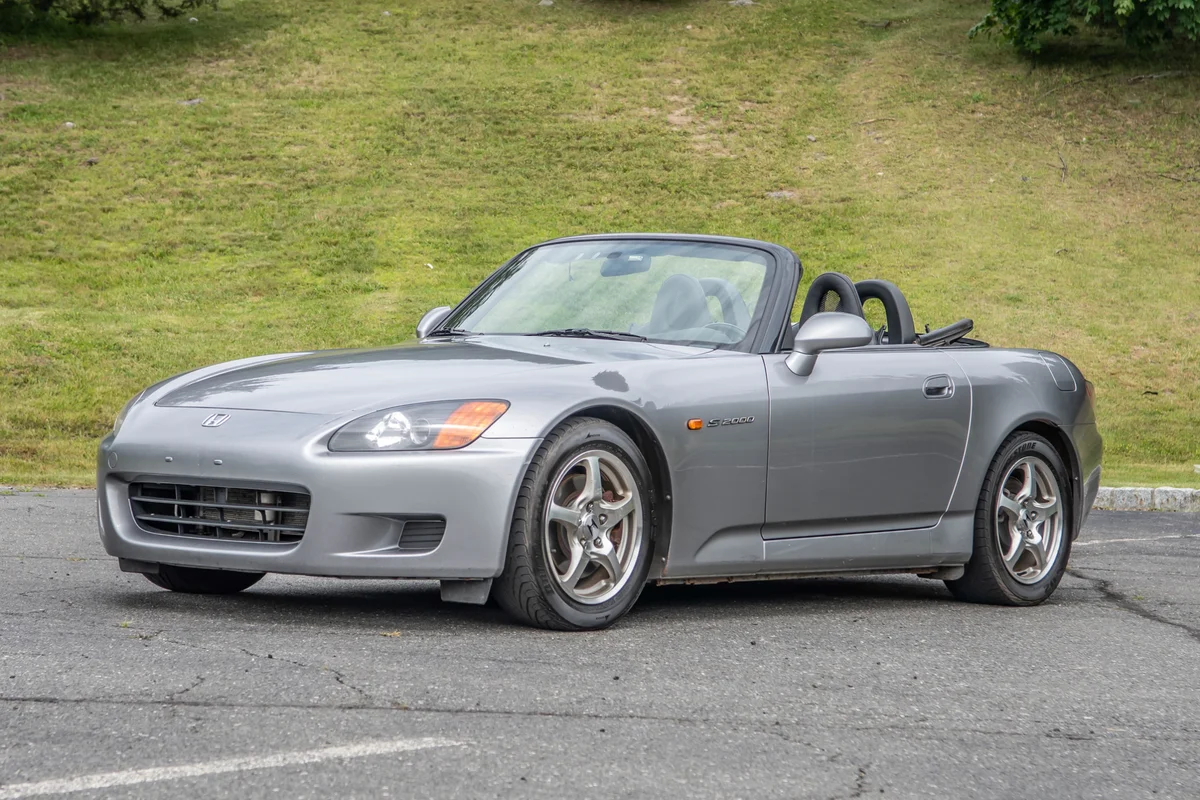
1. Honda S2000 (AP1/AP2)
The Honda S2000 is often cited as the gold standard when it comes to manual transmissions, a benchmark many enthusiasts still refer to decades after its debut. From the moment you grasp the aluminum shift knob, the experience is unmistakable. It’s light, precise, and has a tactile quality that feels engineered for the enthusiast driver.
The six-speed gearbox is incredibly direct, with minimal slop in the linkage and crisp, deliberate gate positions. This precision is no accident—Honda engineered the S2000’s transmission with a front-mid engine layout that places the gearbox directly behind the engine, minimizing the length of shift linkages and thereby reducing vagueness.
Beyond the mechanical layout, the actual feel of the shift lever is a symphony of balanced forces. The throw is short enough to encourage rapid shifts but long enough to prevent accidental gear engagement. The throw distance strikes a perfect compromise between responsiveness and control.
The gear gates themselves have a satisfying mechanical detent, a reassuring click that confirms the gear has fully engaged. Drivers often describe this feedback as “rifle bolt” precise, making each shift feel intentional and mechanical, not vague or slippery.
The clutch pedal in the S2000 complements the gearbox’s excellent qualities with its light and linear engagement. This makes the car easy to drive in stop-and-go traffic, while still providing the sensitivity required for high-performance heel-and-toe downshifts on a track.
It doesn’t fatigue the left leg, yet it allows fine modulation of power delivery. Combined with a precise gearbox, this clutch feels adds to a cohesive and rewarding driving experience.
Owners of S2000s frequently remark on the gearbox’s ability to maintain its smooth, engaging feel over time. Unlike many older manual gearboxes that grow sloppy or rubbery as bushings wear, the S2000’s robust design and high-quality components ensure consistent shifts for tens of thousands of miles.
Maintenance is straightforward, and many enthusiasts upgrade to short-throw shifters or aftermarket bushings to make an already excellent system even sharper. The high-revving engine also encourages frequent shifts, and the gearbox does not disappoint. Revving beyond 7,000 rpm and snapping through the gears feels like a rhythmic dance.
The smoothness of gear changes complements the engine’s willingness to rev, creating a holistic sense of driving harmony. It’s rare to find a car that rewards enthusiasm so thoroughly with its gearbox feel alone.
Historically, the S2000 was Honda’s statement of engineering excellence in the late 1990s, aiming to compete with European sports cars on precision and feel rather than outright power. Its gearbox was a core part of that strategy.
This dedication to driver engagement cemented the car’s legacy as a driver’s favorite, and many manufacturers since have tried—and failed—to replicate that “perfect” manual shift experience.
Even now, aftermarket support for the S2000 transmission remains strong. The community frequently shares tips on maintaining bushings and linkages, upgrading shift knobs, and refining the clutch system.
This vibrant enthusiasm around the gearbox is a testament to how much it means to drivers, reinforcing its position as one of the smoothest and most satisfying manuals ever built.
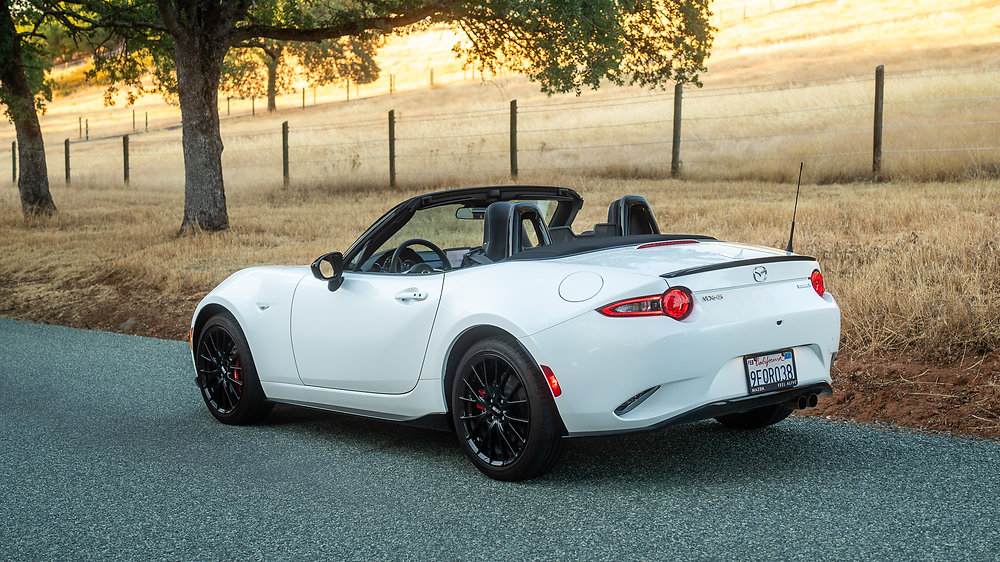
2. Mazda MX-5 Miata (NA–ND)
The Mazda MX-5 Miata is arguably the most beloved lightweight roadster in the world, and a huge part of its widespread appeal is the manual gearbox. Across every generation, Mazda has crafted a transmission that perfectly suits the car’s ethos: simple, light, and extremely engaging.
The NA model set the tone with a short-throw five-speed, and subsequent models refined the feel with six-speed boxes that remained just as intuitive and smooth.
The shifter is famously light and precise, almost mechanical in nature. There’s no mushiness or vague gating to worry about. Instead, each gear engages with a satisfying, positive click that makes shifting feel like a natural extension of the driver’s hand movements. The short throw and light effort allow for rapid gear changes that don’t require wrestling with the lever or applying excessive force.
Mazda’s engineers have prioritized low friction and direct mechanical linkage, often using cable or rod linkages designed to minimize slack. This mechanical purity translates into minimal play or sloppiness in the shifter, making the gearbox feel alive and responsive.
Drivers report that it’s easy to learn how to row through gears quickly, and with practice, shifts can be executed with near-instant precision, which is a real boon on twisty roads or the track. The clutch pedal complements the gearbox with a light and progressive engagement, allowing new drivers to easily learn smooth starts while providing enough feedback for experienced drivers to control power delivery precisely.
The combination of clutch and shifter makes the MX-5 one of the most approachable sports cars for enthusiasts and beginners alike. It’s a very “human” driving experience.
One interesting point is how the MX-5’s gearbox remains refined despite the car’s evolution from simple, NA-era technology to more modern drivetrains. The ND generation especially shows Mazda’s continued dedication to manual driver engagement, with improved internal components and tuning that reduce noise and vibration without losing that mechanical feel. It’s a gearbox that feels both modern and classic at the same time.
Enthusiasts also praise the MX-5’s gearbox for its durability and ease of maintenance. While it’s not immune to wear, many owners find it holds up well over time, and replacement parts are affordable and widely available. This reliability adds to the appeal, as a smooth-shifting manual is no good if it becomes clunky or imprecise after a few years.
The MX-5’s gearbox is a perfect partner for the car’s balanced chassis and lively handling. Whether accelerating out of a corner or downshifting into a tight hairpin, the precise feel of the shifter encourages driving confidence. This engagement encourages a driving style that’s both playful and skillful, which is why the MX-5 remains a perennial favorite in the enthusiast community.
Finally, the joy of the MX-5’s manual gearbox isn’t just technical; it’s emotional. Many drivers report that shifting gears in a Miata feels like a ritual, a way to connect with the car’s spirit. This intangible quality elevates the manual transmission beyond mere function, making every drive a little celebration of driver involvement.
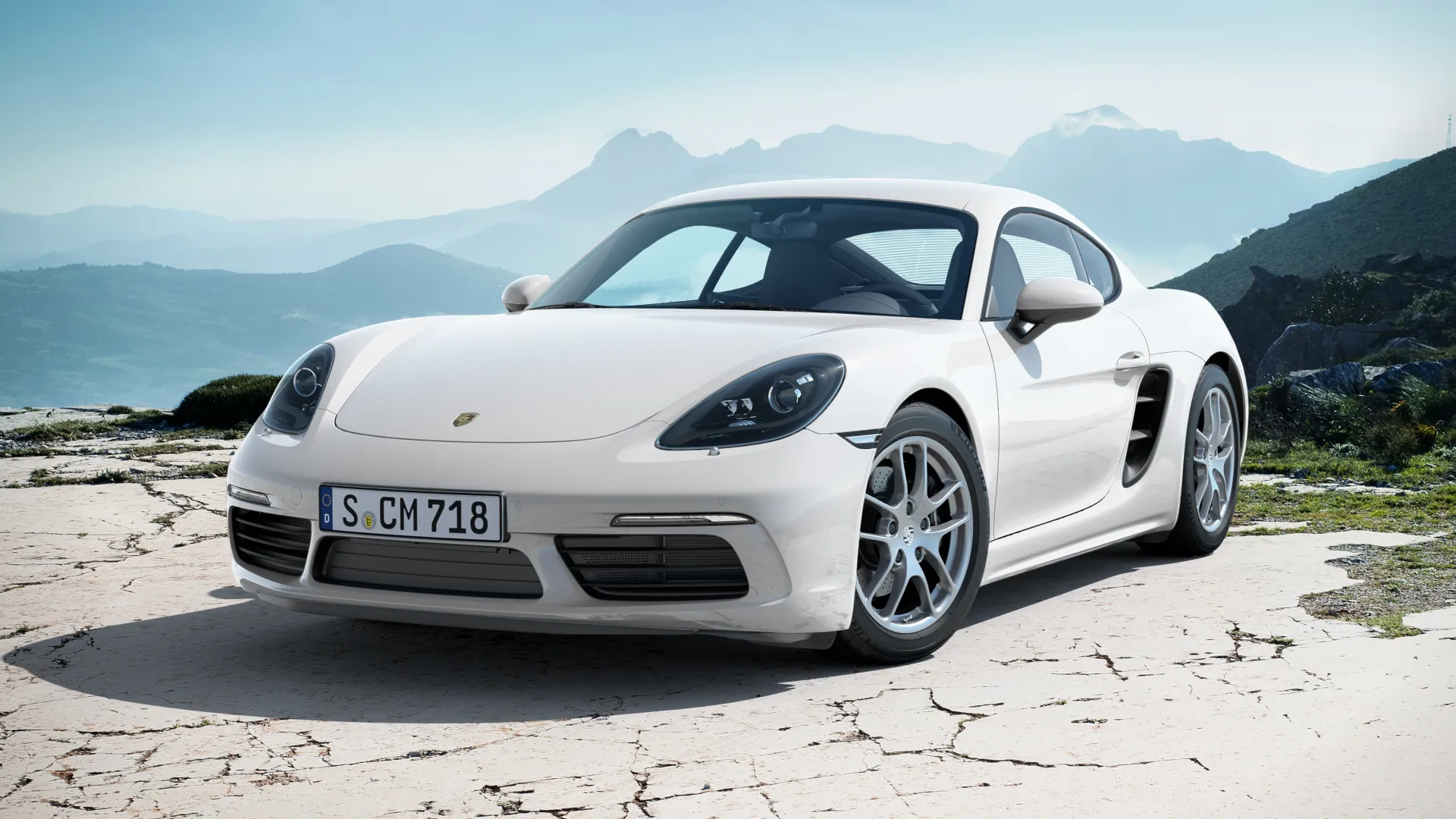
3. Porsche Cayman (987/981)
The Porsche Cayman, particularly the 987 and 981 generations, represents an era when Porsche balanced high performance with driver-focused engagement.
Central to that experience is the manual gearbox, which combines Porsche’s legendary precision with a refined mechanical feel. The six-speed unit is known for its smoothness and confidence, offering a solid yet not overly heavy action that communicates the car’s character.
While the Cayman’s throw is longer than some lighter sports cars, it’s deliberate and weighted perfectly to convey mechanical integrity. The gear gates feel distinct without being harsh, and the feedback through the shift lever is firm, reassuring, and addictive. Porsche engineered the Cayman’s transmission to be a driver’s tool, not just a drivetrain necessity. It demands attention but rewards involvement.
The clutch pedal is similarly well-calibrated, with a medium-to-heavy feel that suits the Cayman’s sporty nature. It’s neither vague nor fatiguing, offering the right amount of resistance to modulate power smoothly.
Drivers can heel-and-toe downshift with ease, and the clutch bite point is consistent, making it easier to master spirited driving techniques. This balance between smoothness and engagement is a hallmark of Porsche engineering.
Under the hood, Porsche’s use of quality materials and precise manufacturing techniques ensures that the gearbox feels durable and refined. The cable linkage is finely tuned to minimize play and translate driver input directly to the transmission. Synchros are aggressive yet smooth, allowing fast shifts without grinding, even for those less experienced at double clutching.
In practical terms, the Cayman’s manual gearbox is also surprisingly versatile. It performs admirably in daily driving, with smooth engagement and easy gear changes, but it truly shines on track or twisty backroads.
The driver feels connected at all times, and the gearbox encourages an active driving style. Porsche’s attention to detail means that this transmission doesn’t just get out of the way; it becomes part of the driving enjoyment.
Owners of 987 and 981 Caymans often speak highly of the gearbox’s longevity and smooth operation even after many miles and spirited use. Routine maintenance keeps the system feeling fresh, and the robust design reduces the likelihood of problems like worn bushings or sloppy gates. It’s a gearbox that’s both a joy to use and reliable, making it a perfect match for Porsche’s ethos.
Finally, the Cayman manual gearbox stands as a bridge between raw driving feel and refined luxury sports car engineering. It’s a transmission that respects the driver’s skill and encourages development, but without punishing mistakes or requiring excessive effort. This rare blend has earned the Cayman a special place among enthusiasts who prize manual transmissions.
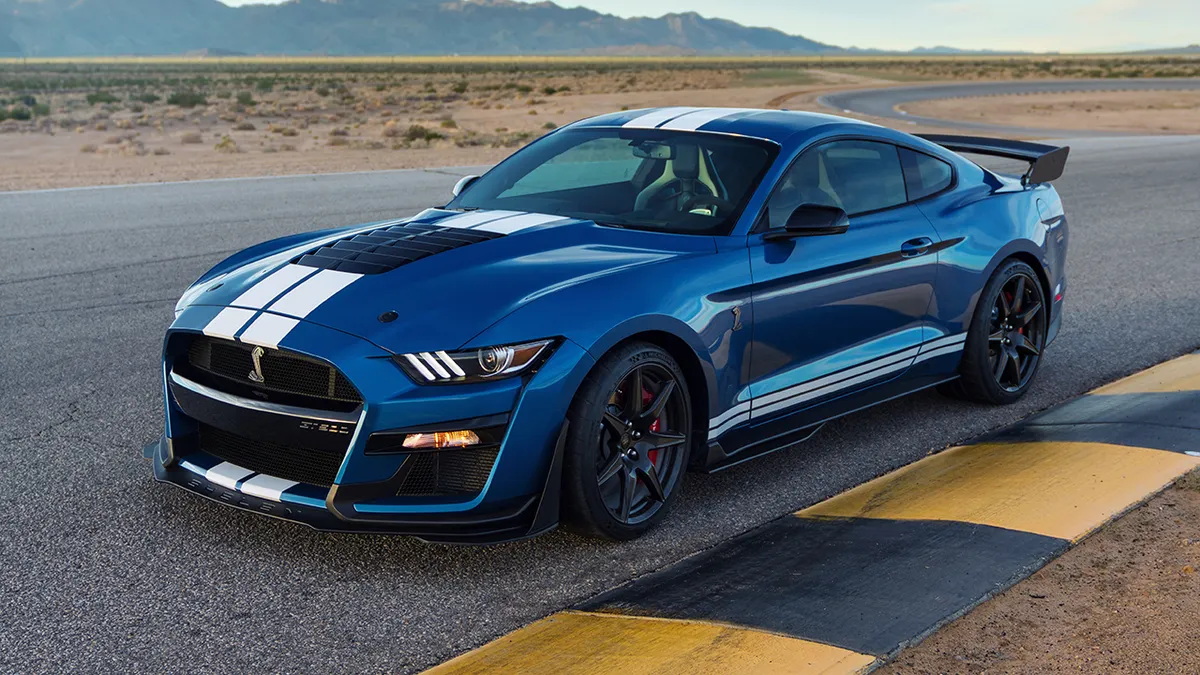
4. Ford Mustang GT (S550, 2015–2023, with MT82-D4 or Tremec TR-3160)
The Ford Mustang, America’s quintessential muscle car, may seem an unlikely candidate for a smooth manual gearbox, but the S550 generation’s Tremec transmissions changed that perception dramatically.
The Tremec TR-3160 in the GT350 and Mach 1, in particular, stands out as a transmission that combines robust durability with refined, positive shifts. It’s a gearbox designed for high horsepower and torque but also tuned to provide a satisfying mechanical feel.
Early versions of the MT82 gearbox in the Mustang faced criticism for imprecise feel and durability concerns, but Ford’s iterative improvements have made later S550 manuals significantly better.
Redesigned shift forks, upgraded synchros, and improved internal geometry resulted in a gearbox with shorter throws, crisper engagement, and more defined gates. This evolution shows how manufacturers can listen to enthusiasts and refine their products over a production cycle.
The shift feel in the Tremec-equipped Mustang is heavy but precise. It’s the kind of gearbox that lets you feel every gear engagement firmly, as if the car is eager to respond to your inputs.
While it’s not as light as a Miata or as tight as a Porsche, it fits the Mustang’s character perfectly. The mechanical engagement enhances the rawness of the V8 powerplant and the car’s aggressive personality.
The clutch pedal is substantial, giving a sense of connection and control. It’s well-suited for spirited driving, providing a clear bite point for quick launches and smooth heel-and-toe downshifts. Together, the clutch and gearbox encourage a driving style that’s both confident and rewarding. The feeling of slotting gears amid the rumble of the 5.0-liter V8 is visceral and thrilling.
Maintenance and durability are also strong points for the Mustang’s manual gearbox. The Tremec is known for being bulletproof, handling high torque and abuse with ease. For owners looking to modify their Mustangs for track use or higher power outputs, this gearbox is a favorite platform due to its strength and shift quality.
The Mustang manual transmission experience is an excellent reminder that a smooth and satisfying manual isn’t just about lightness or short throws.
Sometimes, a gearbox that feels heavy and robust, with a strong mechanical presence, can be equally engaging—especially when it suits the car’s character. For many muscle car enthusiasts, this combination is exactly what they want.

5. BMW E46 M3 (2000–2006)
The BMW E46 M3’s Getrag 6-speed manual transmission is often praised as one of the best manual gearboxes in the history of BMW’s performance cars.
It strikes a near-perfect balance between smoothness and engagement, providing shifts that are buttery but still weighted enough to offer meaningful feedback. The medium-length throw, combined with the robust linkage design, makes gear changes feel both precise and deliberate.
One of the E46 M3’s greatest strengths is the gearbox’s smooth synchros. Gear engagement happens quietly and cleanly, allowing drivers to focus on the road rather than worrying about grinding or missed shifts. The shifter’s feel is solid without being overly stiff—light enough for daily use but firm enough to inspire confidence when pushing hard.
The clutch pedal complements the transmission beautifully, offering progressive engagement that allows smooth starts without sacrificing control. This is important for a car like the M3, which balances everyday usability with track readiness.
Drivers appreciate the consistency of the clutch bite point, which helps them master heel-and-toe downshifting and launch control techniques.
The E46 M3’s manual gearbox benefits from BMW’s decades of transmission engineering experience. The Getrag unit features robust gears, high-quality materials, and precise manufacturing tolerances. This not only ensures smooth operation but also remarkable durability. Many E46 M3s continue to run flawlessly even after spirited use and high mileage.
Enthusiasts often highlight how the gearbox’s smoothness doesn’t come at the expense of engagement. Unlike some manuals that feel either vague or overly harsh, the E46 M3’s transmission feels connected yet refined. This duality makes it a joy on twisty roads, where precise gear changes are essential, and during everyday commuting, where smoothness is appreciated.
Finally, the E46 M3’s gearbox holds a special place in the hearts of driving purists. It’s a rare example of a manual transmission that can be both a precision instrument and a pleasure to use daily. For many, it represents the epitome of what a sports sedan’s manual gearbox should feel like: smooth, confident, and connected.
Five Cars with Notchy or Less Satisfying Manual Gearboxes
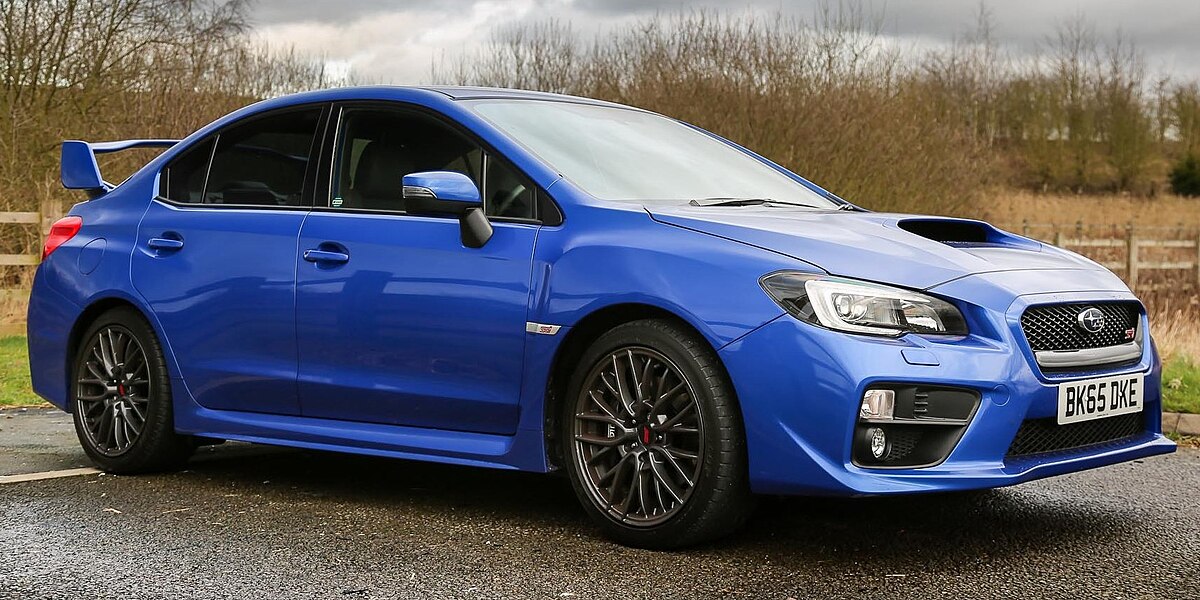
1. Subaru WRX (Various Generations, especially 2008–2014)
The Subaru WRX has long been a favorite among rally fans and performance enthusiasts, but one recurring criticism across multiple generations—especially the third-generation (2008–2014)—is the notchy, vague, and at times frustrating manual gearbox. While the WRX delivers strong performance and excellent all-weather traction, the gearshift feel has consistently lagged behind rivals in terms of precision and refinement.
One of the most common complaints about the WRX’s manual gearbox is its rubbery and vague shifter feel. Shifts often require extra effort and lack the positive engagement found in more polished systems.
There’s a sense of uncertainty when moving through the gears—drivers often describe it as feeling like you’re stirring a bowl of oatmeal, with indistinct gates and inconsistent feedback. It’s not uncommon for drivers to mis-shift or second-guess gear selection under pressure.
The clutch feel doesn’t help the situation. It can feel abrupt and has a relatively narrow engagement band, making smooth launches tricky, especially for less experienced drivers.
In stop-and-go traffic or spirited driving, this combination of vague shifter and sensitive clutch can make the WRX feel less cooperative than it should be. It saps confidence from the driving experience, especially during quick gear changes.
Subaru’s use of cable linkages and older synchro designs are partly to blame. Compared to competitors like the Honda Civic Si or Mazda3, the WRX’s gearbox has often felt like an afterthought, lacking the tight tolerances and mechanical communication that make a good manual transmission enjoyable. In cold weather—a condition where many WRXs spend much of their life—the shifter can become even more resistant and notchy, compounding the problem.
This is frustrating because the rest of the WRX is so capable. Its turbocharged engine delivers thrilling performance, and the all-wheel-drive system gives it unmatched grip. But the gearbox simply doesn’t keep up, detracting from what could otherwise be a sublime driver’s car. For a vehicle that invites spirited driving, the lack of shift quality feels like a major letdown.
Aftermarket solutions abound—short-shifter kits, stiffer bushings, and upgraded mounts are common modifications among WRX owners seeking to tighten things up. While these can improve feel, they also highlight how much work needs to be done to bring the WRX’s gearbox in line with its performance potential. A great manual shouldn’t require third-party fixes to feel acceptable.
Even Subaru seemed aware of these issues, as the newer WRX models starting with the 2022 generation feature updated gearboxes with improved internals and shift feel. However, for those earlier models, particularly from 2008 to 2014, the notchy, vague gearbox remains one of the most prominent blemishes on an otherwise exciting car.
In the context of the broader performance car market, the WRX’s gearbox shortcomings are all the more glaring. It’s a case study in how a single weak point—gearbox feel—can dilute the overall driving experience, reminding us that even a well-performing car can suffer if the tactile interface isn’t right.

2. BMW E60 5-Series (Especially 530i and 545i Manuals)
The BMW E60 5-Series marked a significant technological leap for the German automaker in the mid-2000s, introducing features like iDrive, active steering, and advanced suspension systems.
But while the car’s chassis, engine, and technology were mostly ahead of their time, one area where it failed to impress was the manual gearbox—especially in models like the 530i and 545i equipped with the 6-speed manual.
Unlike the satisfying gearbox found in the earlier E39 or later E90-series cars, the E60’s manual felt disconnected, imprecise, and oddly clunky. The shift action was long and rubbery, with an inconsistent resistance across the gates.
Moving from third to fourth might feel fine, but shifting into second or reverse could feel notchy and even grindy, especially in cold conditions or during quick transitions. This inconsistent behavior undermined the driver’s trust in the gearbox.
The clutch pedal was another sore point. It had a long, vague travel with a mushy engagement point that made smooth shifting difficult. For a luxury performance sedan, this was a disappointing oversight. The clutch often felt out of sync with the shifter, leading to lurching starts or abrupt gear changes, particularly in spirited driving. In a car with sporting intentions, that level of detachment is hard to forgive.
A major contributor to the problem was the gearbox’s insulation and linkage design. BMW attempted to isolate noise and vibration for comfort, but in doing so dulled the mechanical feedback that makes a manual enjoyable.
The result was a gearbox that felt synthetic—technically functional, but devoid of soul. It lacked the satisfying engagement that enthusiasts associate with the BMW brand.
Compared to the crisp, mechanical feel of the E46 M3 or even the E90 3-Series that followed, the E60 manual simply felt like a step backward. This was particularly frustrating because the engines—especially the V8 in the 545i—were full of character and torque. But the gearbox couldn’t keep up, reducing the driving pleasure and emphasizing the car’s more luxurious than sporting demeanor.
Owners often noted that shifting became even more problematic as the car aged. Bushings wore out quickly, linkages loosened, and the long throws only got more vague over time. Replacing parts helped, but even in top condition, the shifter never felt as precise as it should have for a performance-luxury sedan. The gearbox simply lacked the mechanical intimacy that defines a great manual.
Unlike some modern BMWs with optional short-shift kits or M-specific tuning, the E60 never received a factory upgrade to its manual feel. It remained an afterthought—an option offered more out of tradition than engineering focus. For a company with a history of excellent manual transmissions, the E60 was a rare miss.
Ultimately, the E60’s manual transmission serves as a reminder that refinement and engagement must be balanced carefully. Over-insulating the gearbox may have made it quieter, but it stripped away the communication that makes driving enjoyable. It’s not a terrible gearbox—it’s just a soulless one, and for many drivers, that’s worse.
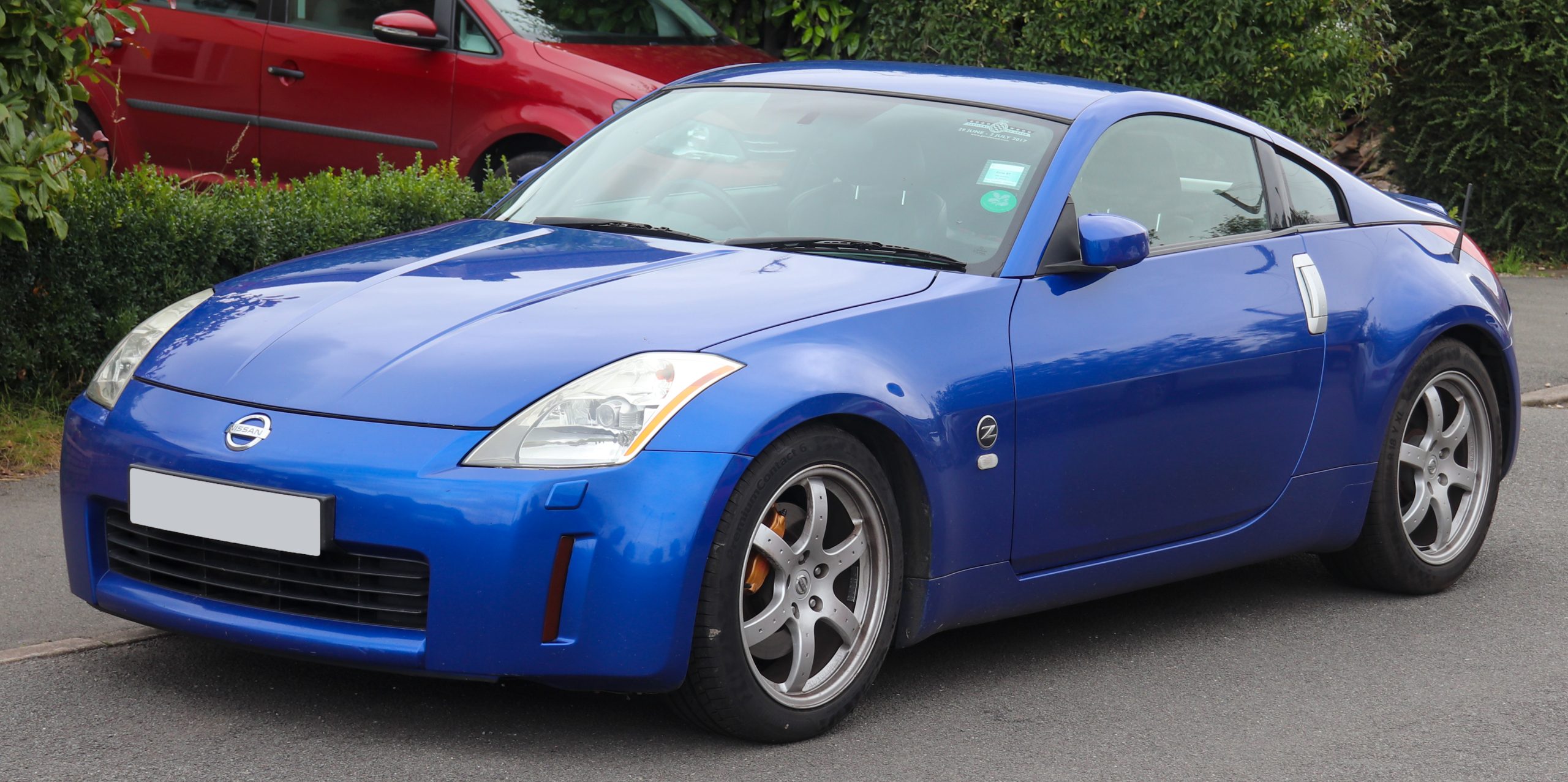
3. Nissan 350Z (Early Model Years, Especially Pre-2006)
The Nissan 350Z brought back excitement to the Z badge when it launched in the early 2000s, but while the car earned praise for its styling and performance, early versions of its 6-speed manual transmission left a lot to be desired. Many early 350Z owners complained about a gearbox that was stiff, notchy, and imprecise—particularly during cold starts or aggressive driving.
The first thing most drivers noticed was the notchy feel when moving between gears. The transmission required more effort than expected, and the gates could feel narrow or imprecise, leading to occasional mis-shifts, especially under pressure.
Second gear was particularly problematic, often feeling resistant or clunky on both upshifts and downshifts. Even with practice, some shifts never felt as smooth as they should.
Another issue was the gearbox’s poor cold-weather performance. In lower temperatures, the transmission became even more stubborn, sometimes refusing to go into second gear without a fight.
Nissan eventually addressed some of these concerns with revised synchros and better gear oil in later years, but the damage to the early model’s reputation was done. Enthusiasts who expected a refined, performance-focused manual were left disappointed.
The clutch pedal also received criticism. It was heavy without being particularly communicative, and the engagement point could be inconsistent.
Combined with the notchy gear engagement, this created a disjointed driving experience that made smooth, quick shifts more difficult than they should have been. Heel-toe downshifting was possible, but the pedal spacing and clutch behavior didn’t encourage it as naturally as in some rival cars.
Owners and tuners quickly turned to the aftermarket to address these issues. Upgrades like short shifters, stiffer transmission mounts, better clutch master cylinders, and high-performance fluids became common among 350Z owners. These modifications often improved feel, but they were, again, a band-aid for what should have been addressed at the factory level.
The frustrating part is that the rest of the 350Z’s package was strong—plenty of power, great balance, and good looks. But the poor shift quality held the car back from being a truly great driver’s car. Nissan had the right formula but faltered in the execution of one of the most important interfaces between driver and machine.
By the time the 370Z arrived, many of these gearbox issues had been improved, though even then, some drivers still criticized the transmission feel.
Nissan’s SynchroRev Match system helped mask some of the issues, but that’s a software solution to a mechanical shortcoming. It’s telling that the most universally praised manual Zs are the later, heavily modified or Nismo-tuned models.
In retrospect, the early 350Z’s gearbox issues serve as a cautionary tale: a car’s tactile qualities are just as important as its spec sheet. A 300-horsepower coupe with clunky gear changes can be less satisfying than a 150-horsepower roadster with a sweet shifter. It’s a lesson Nissan seems to have taken to heart—albeit slowly.

4. Toyota GR86 / Subaru BRZ (First Generation – 2013 to 2020)
The Toyota 86 and Subaru BRZ, co-developed by both Japanese brands, were widely celebrated for their balanced chassis, rear-wheel-drive layout, and analog driving feel.
However, one area that drew mixed reactions—even among fans—was the manual gearbox. While not the worst offender on this list, the first-gen 6-speed manual was plagued by inconsistent feel, notchy engagement, and issues that hampered an otherwise stellar driving experience.
On paper, the manual gearbox in the 86/BRZ looked promising. It featured a short throw, well-placed shifter, and solid clutch mechanics.
But in practice, many drivers found the shifts to be less than satisfying—particularly when driving at high speeds or under hard acceleration. Gear engagement, especially when cold, often felt obstructed. Second and third gears had a tendency to resist entry, requiring more effort than they should.
The notchy behavior was exacerbated by the gearbox’s sensitivity to temperature and oil condition. In colder climates, shifts could become stiff to the point of feeling mechanical resistance—almost like pushing through semi-frozen grease.
Even under normal conditions, the linkage often lacked the slick, fluid motion that enthusiasts expect from a lightweight sports coupe. This led to a disconnect between the car’s playful handling and its less-than-refined shifting.
The clutch pedal also left some drivers wanting. While light and easy to depress, it lacked strong engagement feel and often made it difficult to judge the exact bite point.
For newer drivers, this vagueness was merely annoying; for experienced enthusiasts attempting to heel-toe or downshift aggressively, it was more disruptive. In high-speed situations, the lack of clarity between the clutch and shifter contributed to less-than-confident gear changes.
Adding to the frustration were reports of synchro wear and premature degradation of gearbox components. Several owners noted grinding issues and balky shifts after relatively modest mileage.
Toyota and Subaru offered updated gear oil formulations and service bulletins to address the complaints, but the experience still felt underdeveloped compared to the car’s rivals. In enthusiast circles, these issues became common knowledge, leading to hesitation from drivers who would otherwise love everything about the car.
It’s particularly disappointing because the GR86 and BRZ excel in almost every other driver-centric category. The chassis is playful, the steering is sharp, and the car’s lightweight RWD architecture makes it one of the best-handling affordable cars in decades.
But the gearbox always felt like it didn’t quite live up to the purity of the rest of the package—something particularly glaring in a car that so clearly targets purist drivers.
Aftermarket solutions, as always, arrived quickly. Many owners swapped in upgraded transmission mounts, shifter bushings, or even heavier gear oils to improve the shift feel. Others upgraded to short-shift kits or stiffer clutch components.
These changes helped, but they also underscored how much better the factory feel could and should have been. Many of these upgrades weren’t to enhance the gearbox, but to make it feel “normal.”
Thankfully, the second-generation GR86/BRZ (2022+) made significant improvements. The gearbox now feels more refined, the synchros smoother, and the engagement cleaner overall. Toyota and Subaru clearly listened to feedback, but for those driving or buying the earlier models, the first-gen 6-speed remains a flawed gem: a car that shines in corners but stumbles between them.
Ultimately, the GR86/BRZ’s manual transmission is a story of “close but not quite.” It works, it engages, and in the right conditions, it can even be fun—but it never fully achieves the crisp, mechanical brilliance found in top-tier manuals like the Miata or S2000. And for a car built on the promise of driving purity, that’s a real missed opportunity.
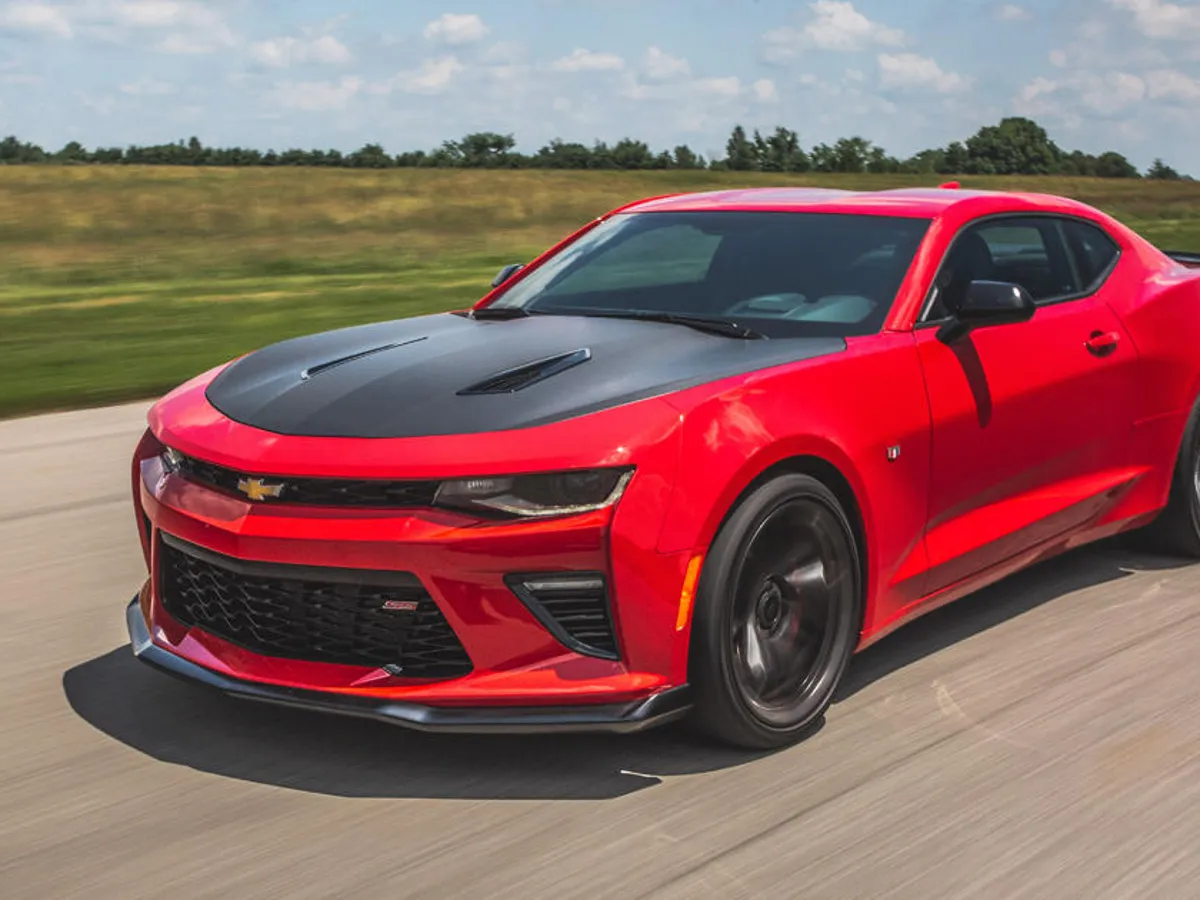
5. Chevrolet Camaro SS (5th Generation – 2010 to 2015)
The fifth-generation Chevrolet Camaro marked a bold return to muscle car form, bringing aggressive styling and big V8 power back into the spotlight.
While the 6.2L V8 and rear-wheel drive configuration checked all the right boxes for performance lovers, the manual transmission—especially the Tremec TR-6060 paired with the SS trim—was a more divisive element. While durable, the gearbox was frequently criticized for being heavy, clunky, and uncooperative in daily driving situations.
The TR-6060 is a transmission designed to handle massive torque—originally developed for trucks and high-horsepower sports cars. While it excels in strength and reliability, its shift feel leaves a lot to be desired in a road car context.
Shifts are heavy, throws are long, and there’s a mechanical resistance to each gear that makes quick or fluid shifting difficult. It often feels like wrestling a stubborn lever rather than dancing through gears.
For many drivers, the gearbox required significant muscle memory to master. First-to-second shifts, in particular, could feel overly stiff and easily balked if not timed perfectly.
The gearbox often demanded a full pause between shifts or a deliberate rev match to avoid grinding. This makes sense in a track setting but becomes tiring or frustrating during everyday commuting or casual backroad driving.
The clutch also contributes to the overall clunky experience. It’s heavy, with a long travel and vague bite point. While this setup works well for drag racing or high-performance driving, it feels cumbersome in traffic or stop-and-go scenarios.
Drivers accustomed to smoother, lighter clutch actions—such as in German or Japanese sports cars—often find the Camaro’s pedal unnecessarily fatiguing and crude.
One of the more polarizing issues was the infamous “skip shift” feature, or CAGS (Computer Aided Gear Selection), which forced the driver to shift from 1st to 4th under light throttle to improve fuel economy.
This electronic intrusion made the already chunky gearbox feel even less intuitive and disrupted the natural rhythm of driving. While easily disabled with aftermarket plugs, it added to the sense that the manual experience in the Camaro SS wasn’t fully thought through for real-world enjoyment.
Despite its flaws, the TR-6060 has its defenders. It’s virtually bulletproof and extremely popular among tuners, track-day regulars, and drag racers. Once moving at high speeds and with precise technique, it delivers reliable, hard-hitting shifts that suit the raw muscle car ethos. But it’s not the kind of gearbox that invites you to shift for fun—it demands effort, attention, and a certain willingness to wrestle.
Inside the Camaro’s cabin, ergonomics further complicate the manual experience. The shifter sits at an odd height, the throws feel exaggerated due to interior proportions, and the driver’s seat position doesn’t naturally encourage fluid hand movement through the gears. It’s as if the gearbox was installed for function but not tuned for feel.
In the end, the Camaro SS manual isn’t broken—it’s just brute-force functional. It gets the job done, and in the right hands, it can even be thrilling.
But for enthusiasts who value shift feel and fluidity as part of the driving experience, it lands closer to “industrial” than “inspiring.” In a muscle car built for drama, maybe that fits—but it won’t win any beauty contests for gearbox finesse.
ALSO READ: 5 Trucks with the Best CNG/LPG Options and 5 Without Alternative Fuels
In the world of driving enthusiasts, few components are held to a higher standard than the manual gearbox. It’s not just a utility—it’s an expression of a car’s soul.
It connects the driver directly to the engine, transforming driving from a passive act into a dynamic relationship. A great manual transmission is a source of pride and joy, remembered long after the car is gone. A bad one, conversely, can become a lasting source of frustration—even resentment-no matter how good the rest of the car is.
After examining the smoothest and notchiest manual gearboxes across a diverse range of vehicles, one thing is clear: shift quality is not a small detail—it’s central to the driving experience. Cars like the Honda S2000, Porsche Cayman, Mazda MX-5, BMW E46 M3, and Tremec-equipped Mustangs prove that when a gearbox is tuned correctly, it becomes a seamless extension of the driver’s will.
These cars don’t just shift well—they celebrate each gear change. Their transmissions are crisp, confident, and mechanically engaging, helping the driver feel more connected, more in control, and ultimately more in love with the act of driving.
What makes these gearboxes great isn’t always about speed or sophistication. In many cases, it’s about balance—short but not overly tight throws, clutch pedals that are progressive but not overly light, and a shifter feel that tells you exactly what the mechanism is doing without being harsh or brittle.
In these vehicles, the gearbox doesn’t just work—it invites. It encourages the driver to play, to learn, to improve. That’s the magic of a well-sorted manual transmission.
On the other hand, our look at less satisfying manuals—like those found in the Subaru WRX, BMW E60, Nissan 350Z, early BRZ/86, and Camaro SS—reminds us how much damage can be done by getting this one aspect wrong.
A notchy gearbox doesn’t just interrupt the flow of driving—it changes how a driver feels about the car. It sows doubt. It introduces hesitation. It breaks the rhythm that should come naturally when man and machine are working in harmony.
These flaws can stem from a variety of causes: cost-cutting, over-insulation, poor synchro design, or gearboxes not suited to a car’s powerband and personality.
In many cases, manufacturers may have prioritized durability or comfort over engagement—trade-offs that make sense on paper, but often frustrate in real-world driving. And while the aftermarket often steps in to correct these flaws, that’s really an indictment of factory engineering falling short, not a long-term solution.
What’s perhaps most interesting is that none of this has to do with the car’s price or prestige. Some of the best-shifting manuals come in affordable, accessible vehicles like the Miata or Civic Si, while some luxury or high-performance models have surprisingly disappointing manuals.
This tells us something crucial: shift feel isn’t about how much a car costs—it’s about how much attention was paid to the details. In an age where manual gearboxes are becoming rarer with each model year, getting it right matters more than ever.
With fewer manuals available, every one that exists becomes a symbol—a statement that driving should be more than just transportation. For those of us who still crave that mechanical involvement, a great gearbox is a sacred thing. It’s not nostalgia—it’s joy made tangible.
So whether you’re buying your first manual car, searching for the ultimate driver’s machine, or simply appreciating the art of engineering, remember this: the gearbox is more than just a tool. It’s a conversation. And when that conversation flows—when the clutch and shifter and engine speak the same language—it’s one of the most beautiful dialogues a driver can have.

